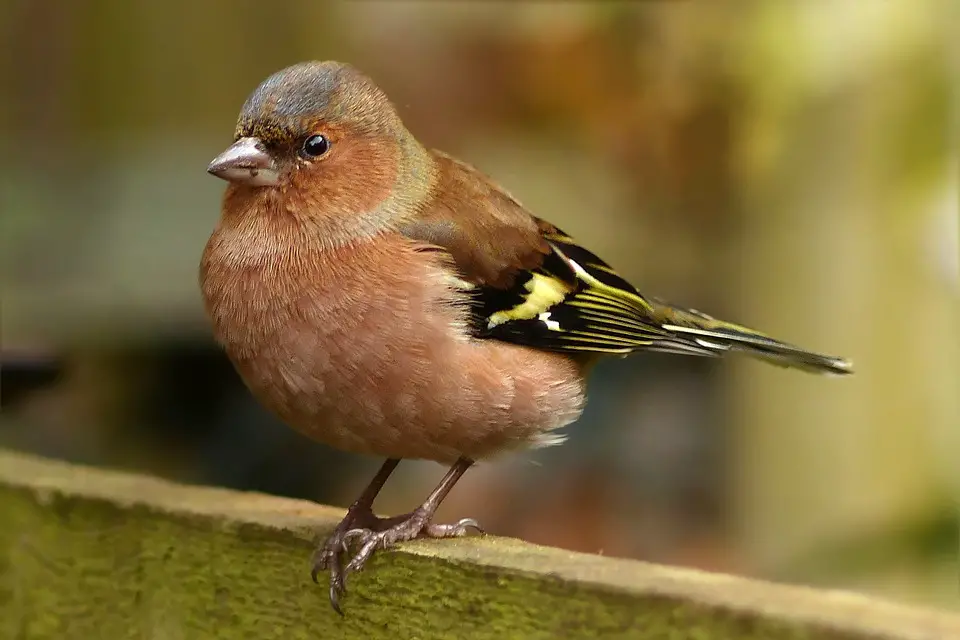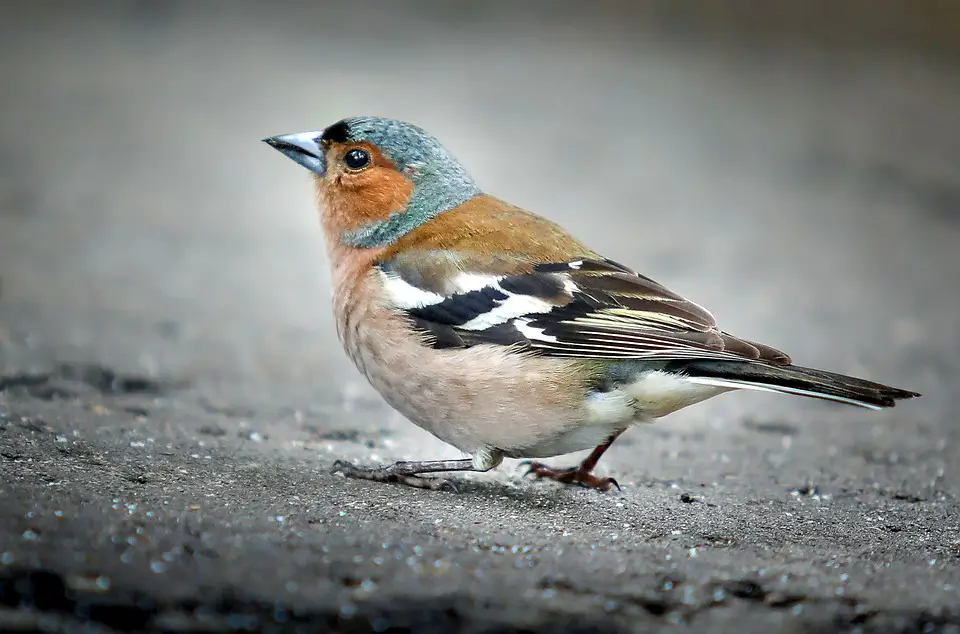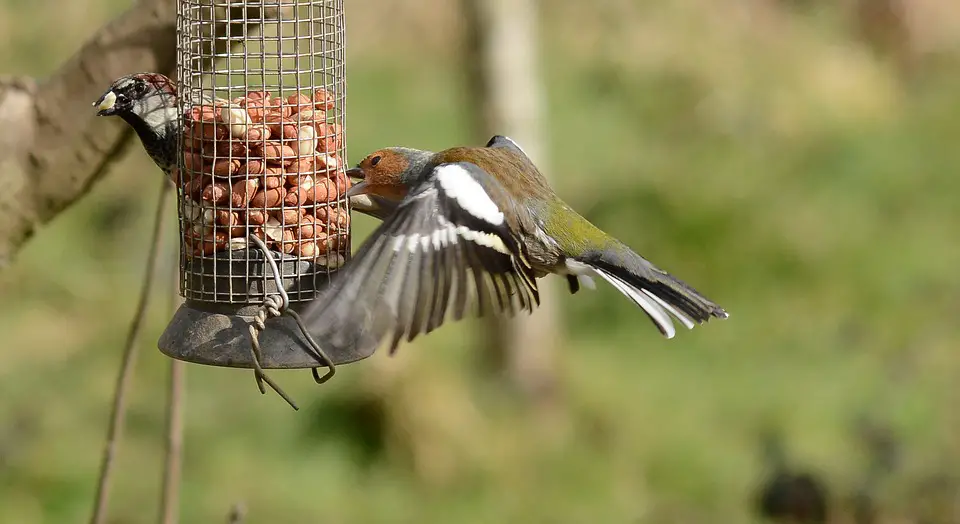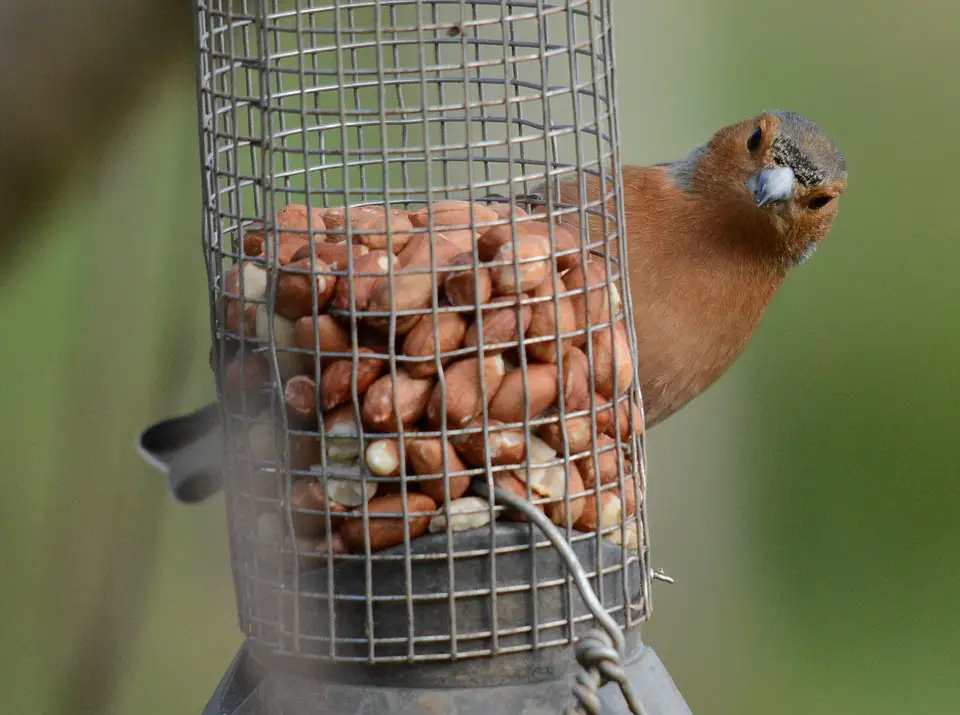Sat in my garden watching the many varieties of bird that visit my numerous feeding stations pondering if they are particularly selective about their diets or if all birds eat all bird seed?

The chaffinch is probably my favourite songbird, not just because of his tuneful song but because of the beautiful bright colouring of his plumage that he brings to my garden too.
I researched the chaffinch’s diet and thought I’d share my findings with you.
They are omnivorous, so seeds are the mainstay of their diet and during autumn and winter they feed in flocks on farmland. Mealworms, spiders and any other invertebrates they can find are their main source of food during summer months.
Caterpillars are what they mostly feed their young.

Birdseed scattered from feeders and onto the ground is a favourite too, they enjoy suet based feeds and have a particular fondness for sunflower hearts and niger seeds.
They are also partial to lots of wild berries, especially from the honeysuckle plant.
I decided to look at further detail when and how these foods should be fed.
Table of Contents
Safe Feeding
The chaffinch is a timid little fella who likes sheltered feeding spots and enclosed feeders away from the intimidating eyes of the bigger birds. Maybe next to the cover of a tall tree where he can be inconspicuous between the branches from where he can dart out to get his food?.
Also, higher bird tables and feeders will have better rates of success as he will feel less vulnerable to predators.
Top of the Menu
Ah, this one is easy.. sunflower hearts and niger seeds.

Sunflower hearts
The pale inner of a sunflower seed once the hard black outer shell has been cracked off.
Light and easy to carry and absolutely packed with proteins and vitamins. The bird eats just a little and gets a huge burst of energy from the high calorific value, it’s his equivalent of a Mars bar, helps him work, rest and play!
The essential oils keep his skin and feathers in soft, glossy condition and the vitamins keep his beak strong.
They are easily digestible for his young too and better for your garden, no messy black shells everywhere!
Niger seeds
This is the oily dark seed that is often mistakenly thought to be part of the thistle family. So oily that it packs a huge punch for finches, the high fat content being perfect for them to store to use for warmth and energy throughout the winter.
Much the same as sunflower hearts they are calorific, offer much protein benefit and are high in calcium so are great for beak and bone strength.
Think your finches aren’t eating them as there seems to be a lot on the ground? Check again, these are probably just residue, the hard outer casings that have been dropped.
Peanut Crumbs
Many chaffinches seem to enjoy these, particularly mixed with suet and hung high in a tree. (see How to Make Fat Balls)
The blitzed nuts are much easier to eat and digest and my waistline is testament to their high calorific content! Calories mean energy and warmth to a chaffinch.

The Dining Table
Both of these seeds should be kept in their own designated feeders. Don’t be tempted to overfill them, the seeds have a tendency to rot if left to get damp, so try and put fresh seed out every couple of days. The finches will still eat them and the bacteria can make them ill.
Make sure the mesh on the feeder is tiny, this discourages the big, bully boy pigeons from stealing it. The chaffinch’s hooked beak can easily negotiate the holes and when it can’t they think nothing of flipping upside down to try from a different angle! Fascinating to watch the tiny acrobats at work!
Try a collecting tray beneath the feeder too, this should hopefully stop encouraging the pigeons to get scraps from the ground.
Honeysuckle
Seeing a honeysuckle in full bloom in summer always reminds me of my friend’s house as a child. Her mum’s plant was so grand, it covered an archway and several fencing panels. It was stunning and smelt divine and was my go to hiding place, much the same as the chaffinch. Not only does the climber offer a perfect hiding place for the shy creature but an array of food too.
In autumn the berries offer tasty sustenance and during summer months the beautiful bright flowers attract several insect varieties, another source of food.
Feeding the Family
During nesting season, April until July, the chaffinch will have made its nest high in a tree. A deep nest made of grass, moss and feathers, lined in delicate cobwebs. From there he will become a forager, scouring the branches for spiders, flies, and other invertebrates.
Caterpillars are the main source of protein on which he feeds his young, though the soft sunflower hearts are also easily digested in their tender stomachs.
They also have the remarkable ability to feed during flight, catching an unsuspecting meal in mid-air and snatching in its beak. Wow!
When there is little else available chaffinches will eat most things proffered year round, scraps from a quiet bird table and crumbs from feeder.
Happy Feeding
These things that I’ve suggested are his favourites and not only will they entice him to your garden, they will keep him coming back.
And with in excess of 11 million chaffinches in Britain alone, if he brings his friends round, it will be one hell of a party!

Thank you. That was really useful.
Very useful information. Especially about the honeysuckle.